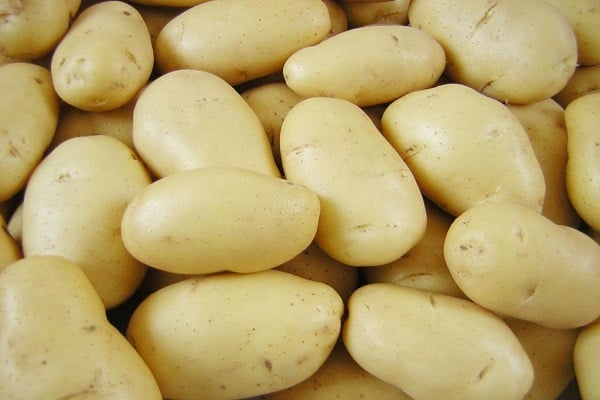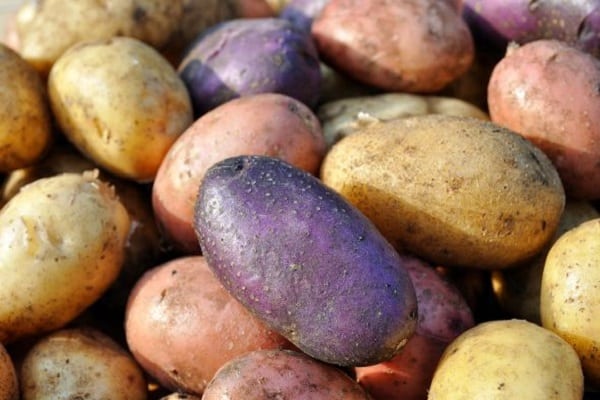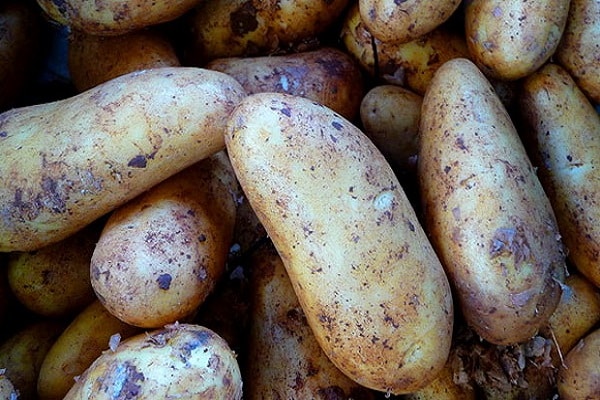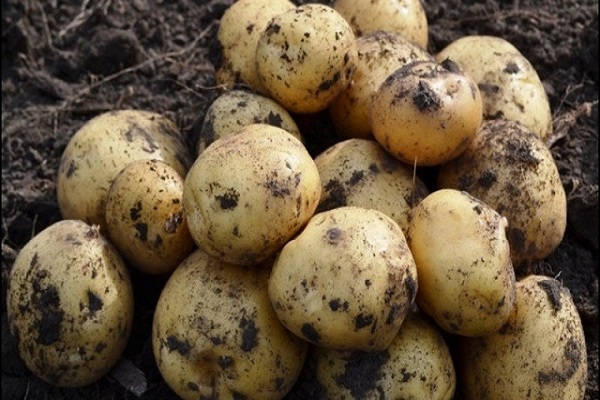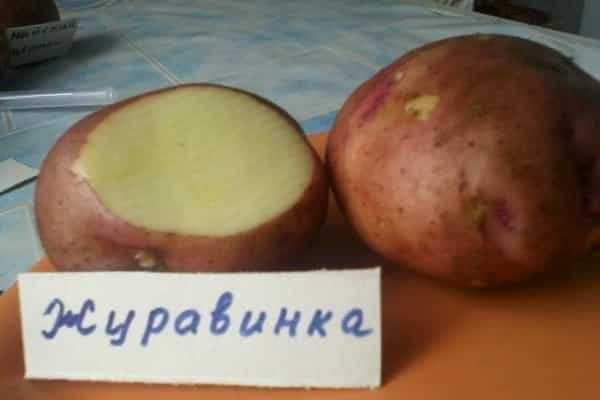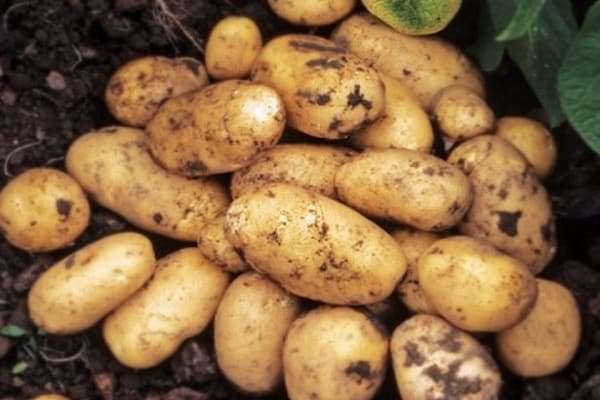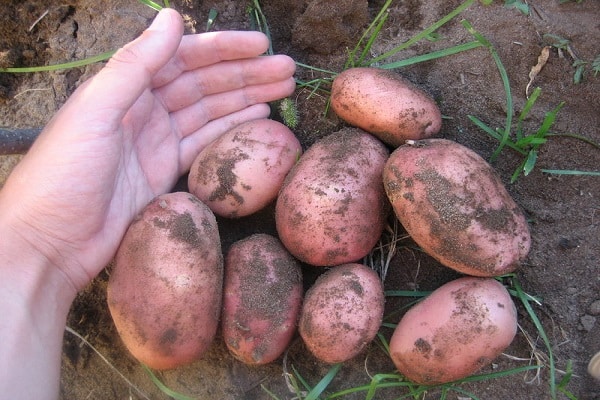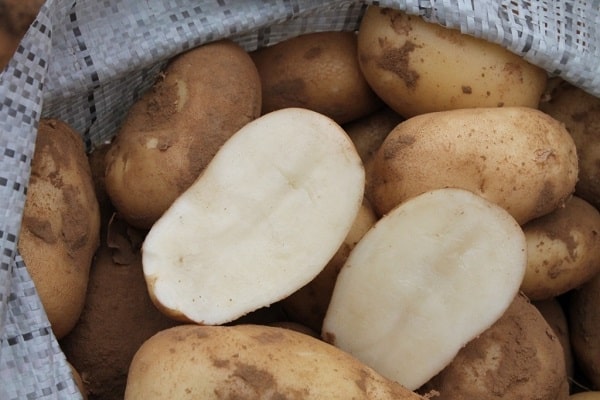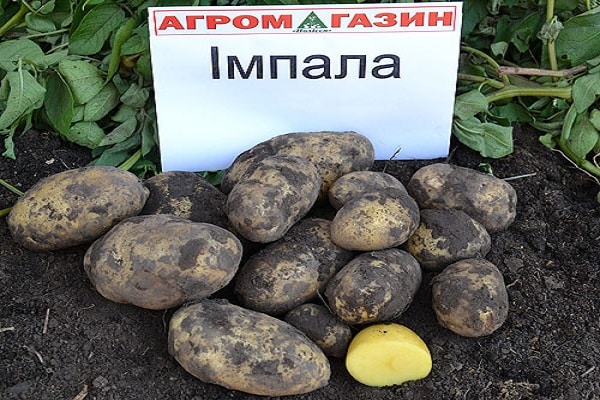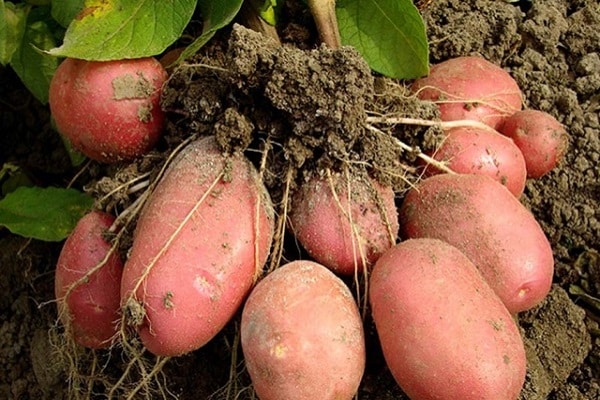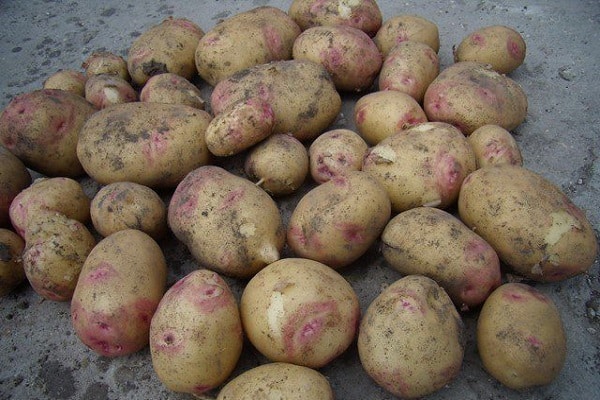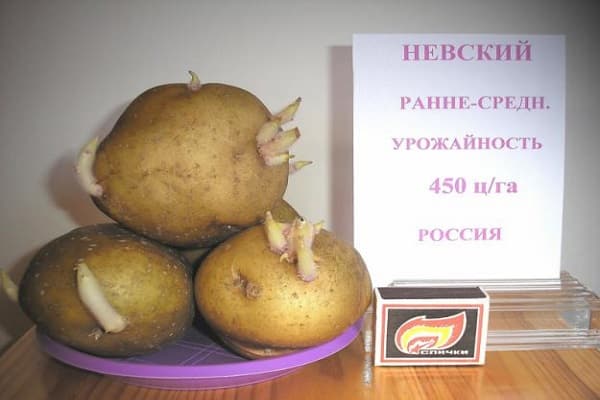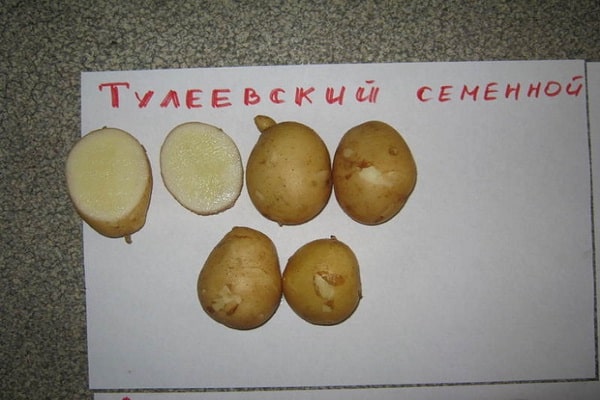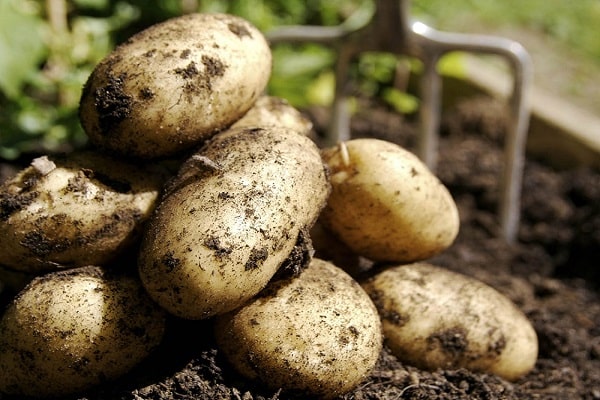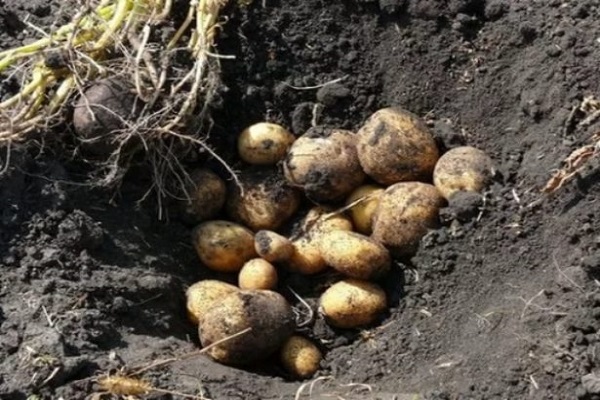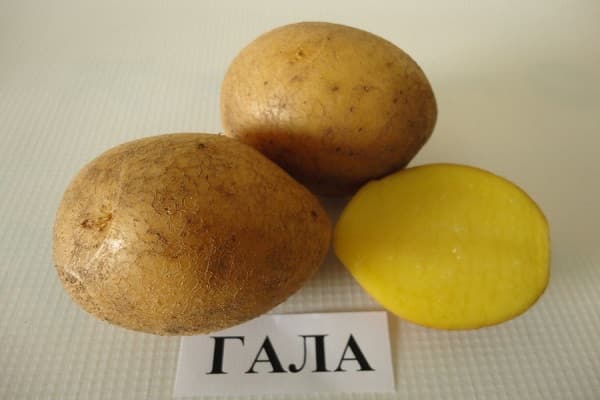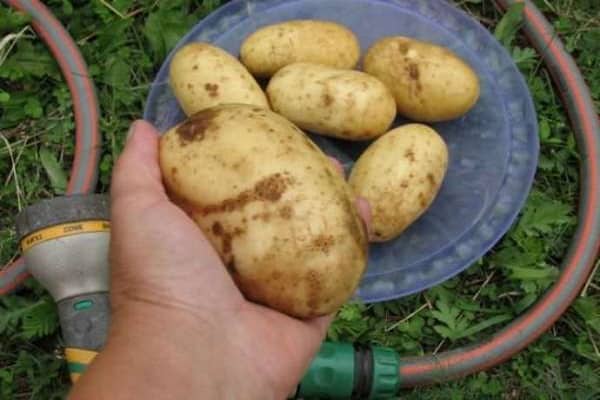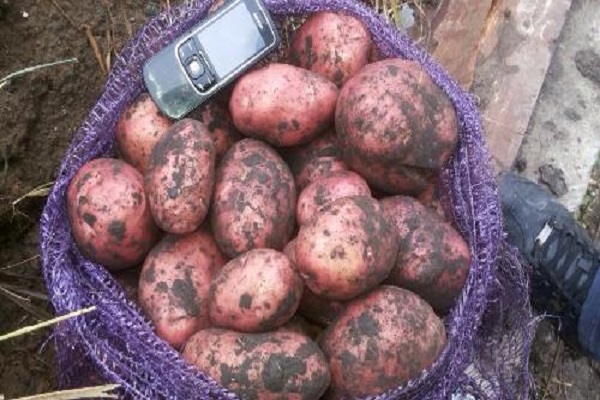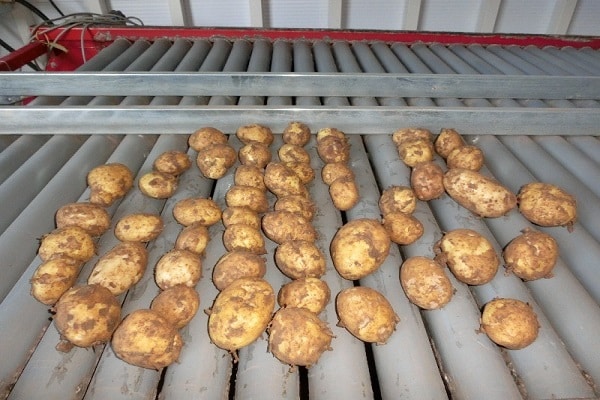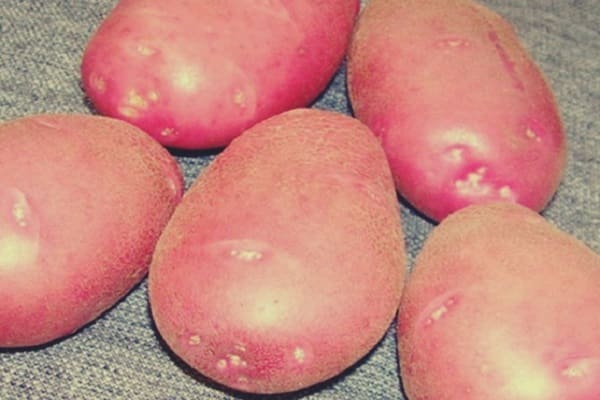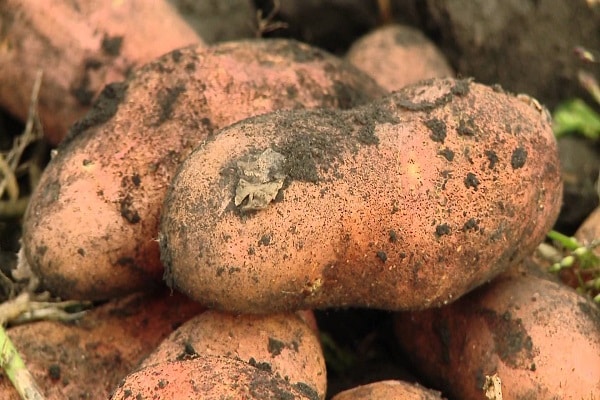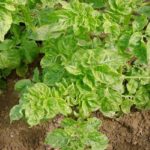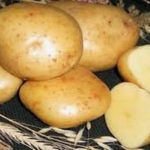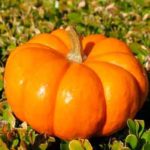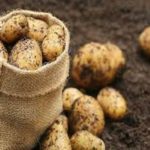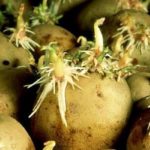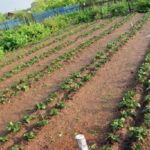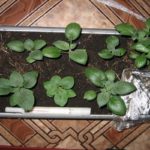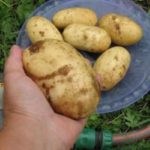The best potato varieties can be distinguished among various groups that differ in certain characteristics. You can make a choice based on the timing of fruit ripening, disease resistance, ease of cultivation, as well as taste and external qualities. Everyone chooses the necessary characteristics for themselves.
Description of vegetable crop
Everyone's favorite vegetable is scientifically called tuberous nightshade. The plant at each stage is characterized by certain changes in development.
The following phases of potato development are distinguished:
- The first phase begins after planting the tuber in the ground.After some time, it softens and eyes begin to sprout.
- At this stage, the stem, leaves, and root system of the potato are formed. The root consists of thin branches on which tubers begin to form.
- Buds begin to form and actively grow on the bush.
- At this phase, flowering and tuber growth begin.
- At the last stage, the tops wither and the tubers reach their final maturity.
The duration of each growth phase depends on the selected variety, weather conditions, and agricultural technology.
Potato types are distinguished not only by ripening time, but also by other characteristics. There are fodder, table, and technical varieties, and universal species have also been bred.
Taste and yield will depend not only on the type, but also on the soil composition. Therefore, you need to know what kind of soil potatoes like. The best soil for potato growth is sandy loam, loose soil that allows air to pass through well. Vegetables like slightly acidic soil; in this composition the yield will be higher. It is recommended to fertilize sandy soils in the spring with organic compounds (manure, compost, bird droppings). In heavy, dense soil, additional sand should be added.
For those who are interested in the question of which potato variety is best stored and lasts longer, the best types can be noted: Atlant, Gatchinsky, Zhuravinka, Impala, Nevsky Red, Scarlet.
Siberia does not have the most favorable conditions for growing vegetables. There are cold and long winters, and summers are short and rainy. Suitable potatoes for Siberia are resistant to adverse conditions. Potato varieties for Siberia: Alena, Tuleevsky, Lyubava, Latona, Khozyayushka, Baron.
It is recommended to choose potato varieties for the Urals that can withstand temperature changes: Aspia, Bashkirsky, Snegir, Effect, Lugovskoy.
Potato varieties for central Russia should not be afraid of heavy rains, drought, short-term frosts, and have good disease resistance. The types of vegetables listed below with descriptions get along well in black soil soil and are distinguished by numerous harvests and long-term storage.
Breeders constantly continue their work, so new potato varieties appear. Emerging new species are suitable for central Russia: Adretta, Nakra, Nevsky, Gala. More recently, a new multi-colored type of vegetable has appeared that produces blue, purple, black or even red tubers.
Early boundaries of maturation
Early potatoes include in their group varieties whose ripening period does not exceed 90 days. Indicators may vary depending on weather conditions, climate, and agricultural technology. The harvest can be used for food earlier, already at the end of July. But most often this vegetable is not suitable for long-term storage, as it quickly begins to sprout.
An early potato variety for the Moscow region is Red Scarlet. It is also successfully grown in other regions of the country. The bush is small, begins to bloom early, the flowers are purple-white. Oblong potato fruits of a red hue. The average weight is about 110 g. It continues to develop during drought and resists many pests.
Early potatoes Luck will delight you with a high yield that can be stored for a long time. Medium height bushes with white flowers. The tubers are large with light yellow skin, the flesh is white. It is not susceptible to viral diseases and tolerates bad weather well.
Ultra-early potato varieties can be eaten after 50-60 days; they are rarely suitable for long-term storage.
The earliest Impala potato variety is very popular. From planting to harvesting, only 50 days pass. High yields can be obtained in both dry and rainy areas of the country. Resists many diseases. The bushes are not very tall, the flowers are white. The potato tuber is oblong, yellow-brown in color.
Very early potatoes of the Zhukovsky variety. The vegetable takes root well in various climatic conditions, is not picky about soil composition, and produces a consistently high and high-quality harvest. The flowers are purple-red. Pink potatoes have an oval shape.
The Bellarosa variety has super-early fruit ripening. Can be planted in any type of soil and tolerates dry weather. A tall bush with red-violet flowers during flowering. The pink tubers have an oblong-round shape, the inside is yellow. The species exhibits high resistance to many diseases.
Precocious Colombo potatoes produces consistently numerous tasty fruits. Digging can begin after two months. Rarely gets sick and tolerates adverse weather conditions well. The plant is medium-sized with white flowers. The skin and pulp are yellowish in color.
There are varieties of potatoes that do not bloom at all. Their tuber begins to form before the plant enters the flowering period. Ripening occurs already on the 37th day. These potato varieties include: Empress, Timo, Rocco, Mariella.
Middle and late ripening boundaries
Mid-season varieties potatoes are characterized by the length of the growing season up to 100 days. Potato varieties with yellow flesh and medium ripening limits.
The Romano variety gives a high yield that can be stored for a long time. A blooming tall bush is sprinkled with red-violet flowers. The fruits are formed with pink skin, oval shape and light yellow flesh. Shows average resistance to diseases.
A popular variety of mid-late nightshade is Nevsky. Medium height plant with white flowers. Potatoes have oval tubers with a light yellow surface and flesh. It should be stored in a cool place, as it is characterized by early germination of sprouts.
The Tuleevsky species is distinguished by its average fruit ripening time and very high yield. A medium-sized plant with large snow-white flowers. The tubers are large, oval with a yellow surface.
Other popular vegetables with medium ripening times for tubers are: Carat, Sante, Adretta.
Late potato varieties begin to ripen after 110 days. Late vegetables are better stored in winter, sometimes even until summer.
Picasso is considered a good variety. The bushes are large, very demanding on soil composition and care; when planting, it is important to maintain distance. The tubers are elongated, yellow-brown surface with pink spots. Fruit weight is about 120 g. Poor resistance to late blight.
Tubers of the Zhuravinka variety begin to ripen after 110 days. Very high yield in any region. Bright red potatoes weigh approximately 100 g. This vegetable is high in starch. The tubers are well stored throughout the winter.
The best potato varieties for the middle zone: Zarnitsa, Pobeda, Accent, Slavyanka. Late-ripening potatoes can be stored until summer.
German quality
German potato varieties are chosen by many vegetable growers for their good disease resistance, high yield and unusual taste.
Early ripening potato varieties in alphabetical order, with high German quality.
The ultra-early vegetable Veneta has high immunity, rarely gets sick and is subject to attack by pests. You can harvest the crop after 1.5 months. Small bush with snow-white flowers. The harvested crop is stored for a long time and begins to germinate late. The medium-sized tubers are covered with yellow skin.
A little more than two months pass from the time of planting the early ripening Gala variety. Medium-sized bush, white flowers. The weight of round tubers is 115 g. They are characterized by good disease tolerance and unpretentiousness to climatic conditions.
A popular vegetable from Germany is Colette. Tuber formation begins after 75 days. The plant is medium-sized with red-violet large flowers. The fruits are elongated and yellow in color both outside and inside. The shelf life of collected tubers is long.
The ripening period for Laura potatoes is mid-early. The harvest can be harvested in 80 days. The bushes grow tall, the flowers can be from white to light purple. Potato tubers are red in color, the flesh is deep yellow. It is characterized by good resistance to viruses and does not do well during dry weather.
The Rosara variety can be cultivated in all regions of Russia. The oval-shaped potato has a red skin and a yellow interior. The tubers contain a small level of starch and do not become soft when cooked.
Other popular German varieties that have begun to be planted in other regions are: Agave, Adretta, Bellarosa, Vitara, Karatop, Sprint.
Variety of vegetable types
You can present a table showing the most productive potato varieties.
| Species name | Limits of maturation | Characteristic |
| Bryansk | Super early | The tubers are beige in color, weigh about 95 g, and the flesh is white. The harvest is well stored. |
| Herald | Mid-early | The round fruits are cream-colored and weigh approximately 80 g. The white pulp does not darken when cooked and is well-cooked. |
| Resource | Early | The color of the tubers is light yellow, the pulp is white, weight is 120 g. The plant tolerates cold and drought well. |
| Aurora | Early | Oval-shaped tubers of yellow-pink color and yellow pulp, weight 110 g. The soil should be loose. |
| Felox | Ultra early | Yellow tubers, oval in shape, weigh about 105 g, yellow flesh. |
In addition to yield, you need to choose vegetables that are not susceptible to pest attack. Nightshade crops are often attacked by the Colorado potato beetle.
Potato varieties resistant to the Colorado potato beetle include: Zarevo, Kamensky, Nikulinsky, Temp, Early morning. Of the several thousand types of vegetable crops, there are only a few varieties that are not eaten by beetles. Potatoes that are not eaten by the Colorado potato beetle have leaves that are dense, hard, and drooping.
Varieties resistant to the Colorado potato beetle: Bryansky, Lasunok, Kamensky, Utro. All varieties are starchy, are distinguished by numerous harvests and sufficient resistance to infections.

